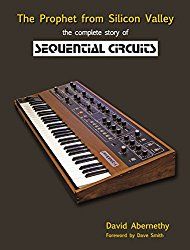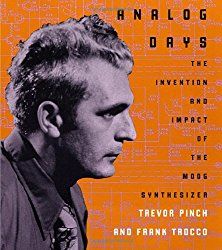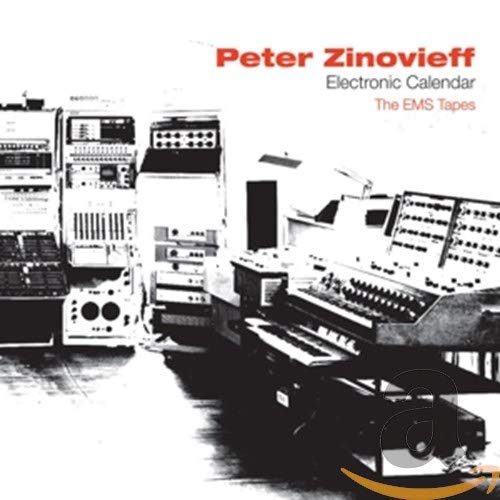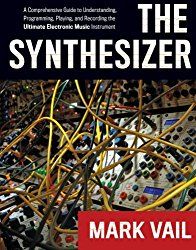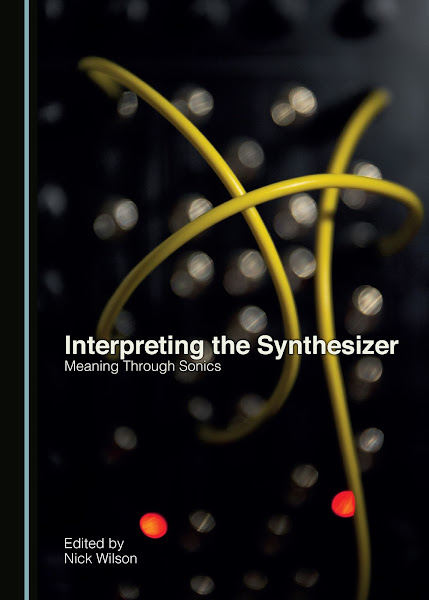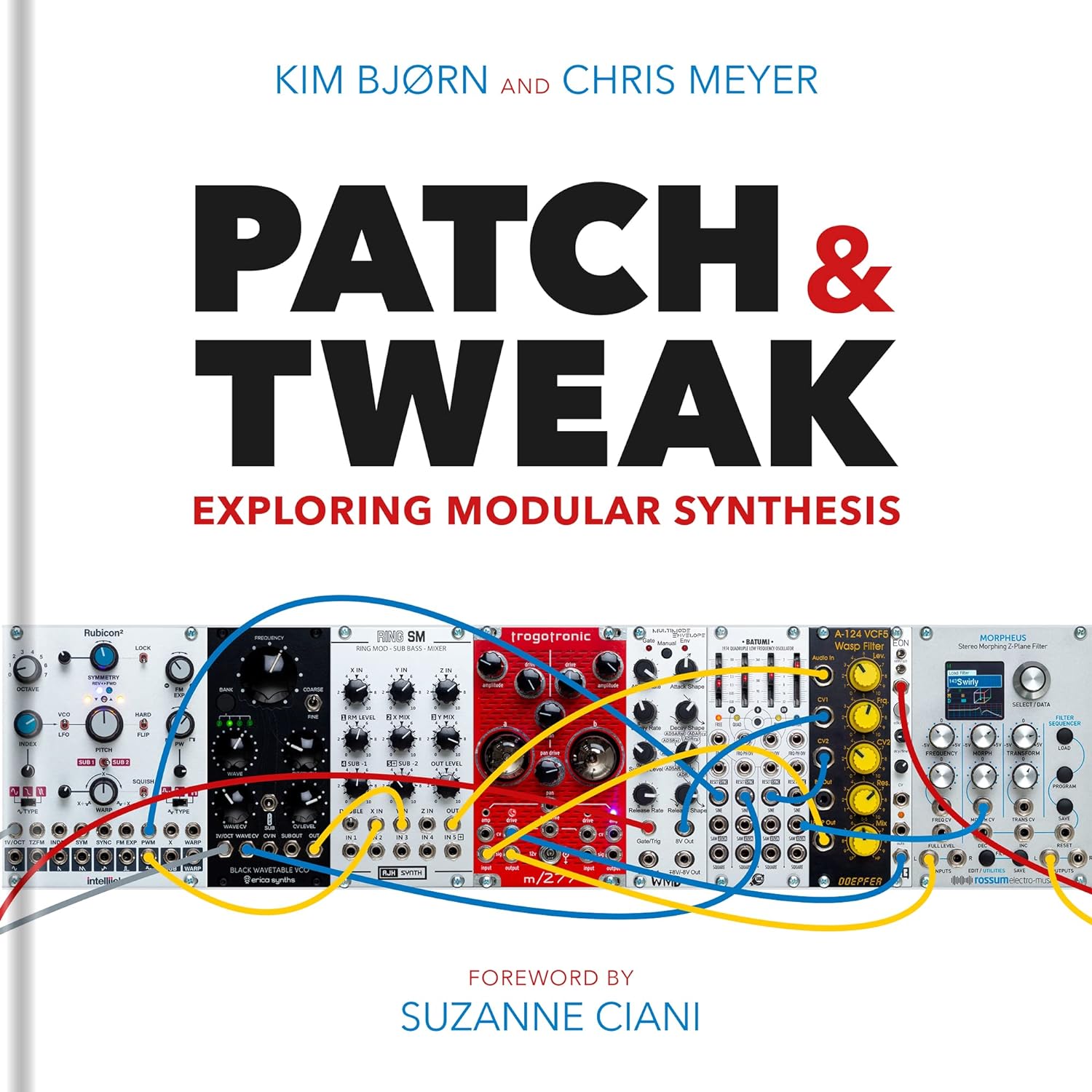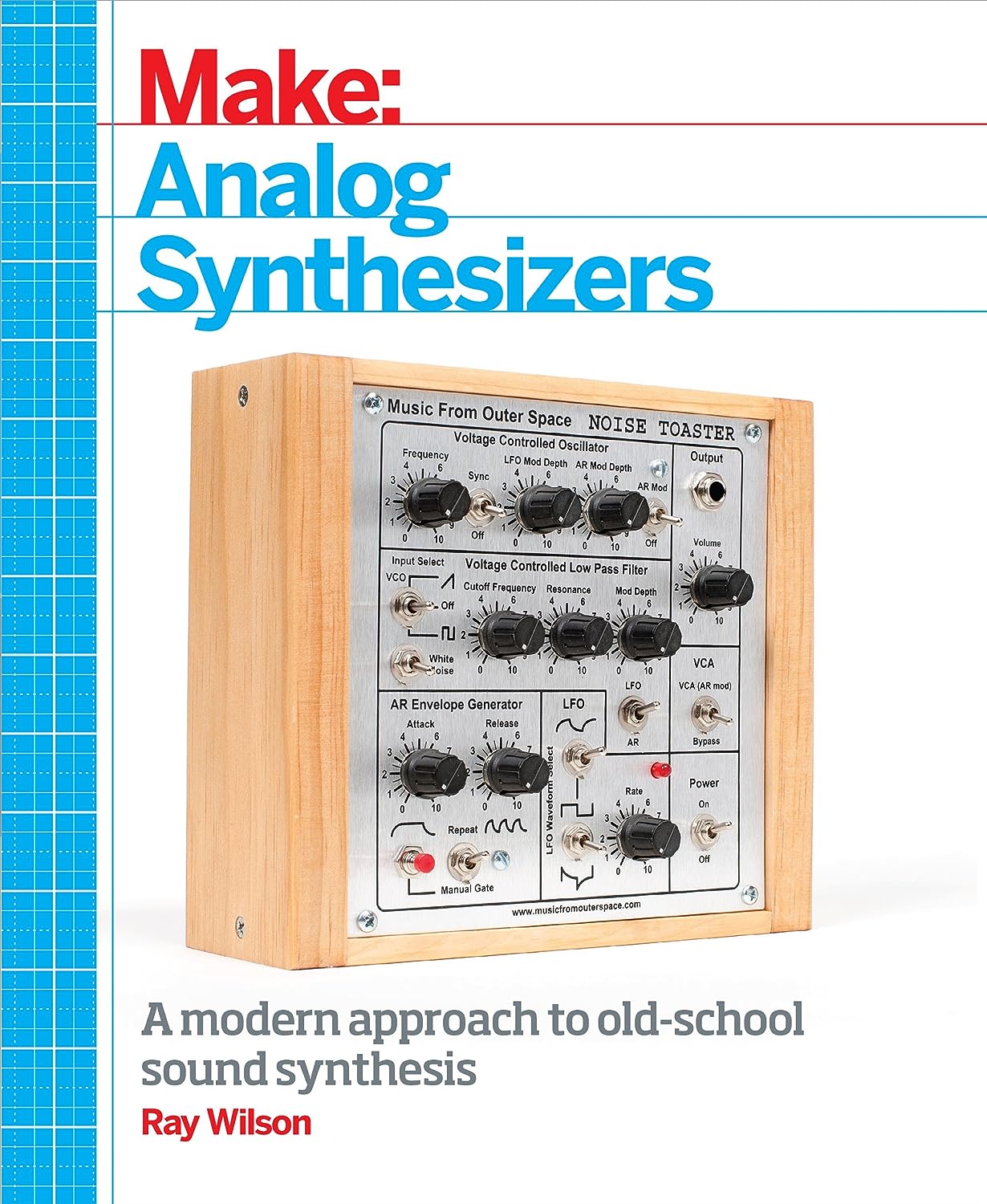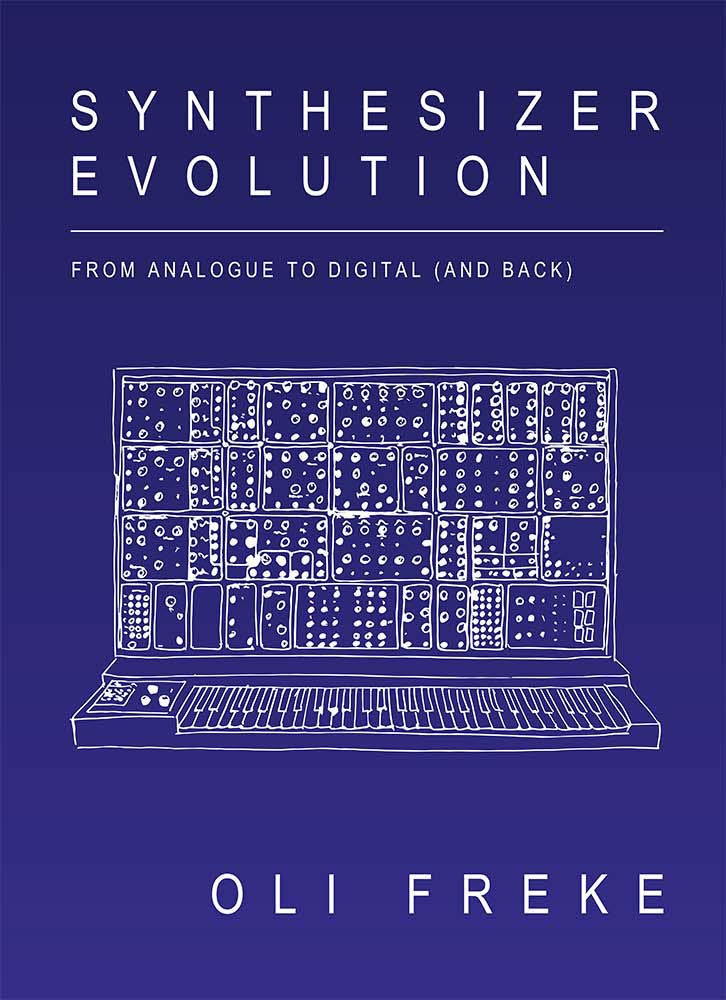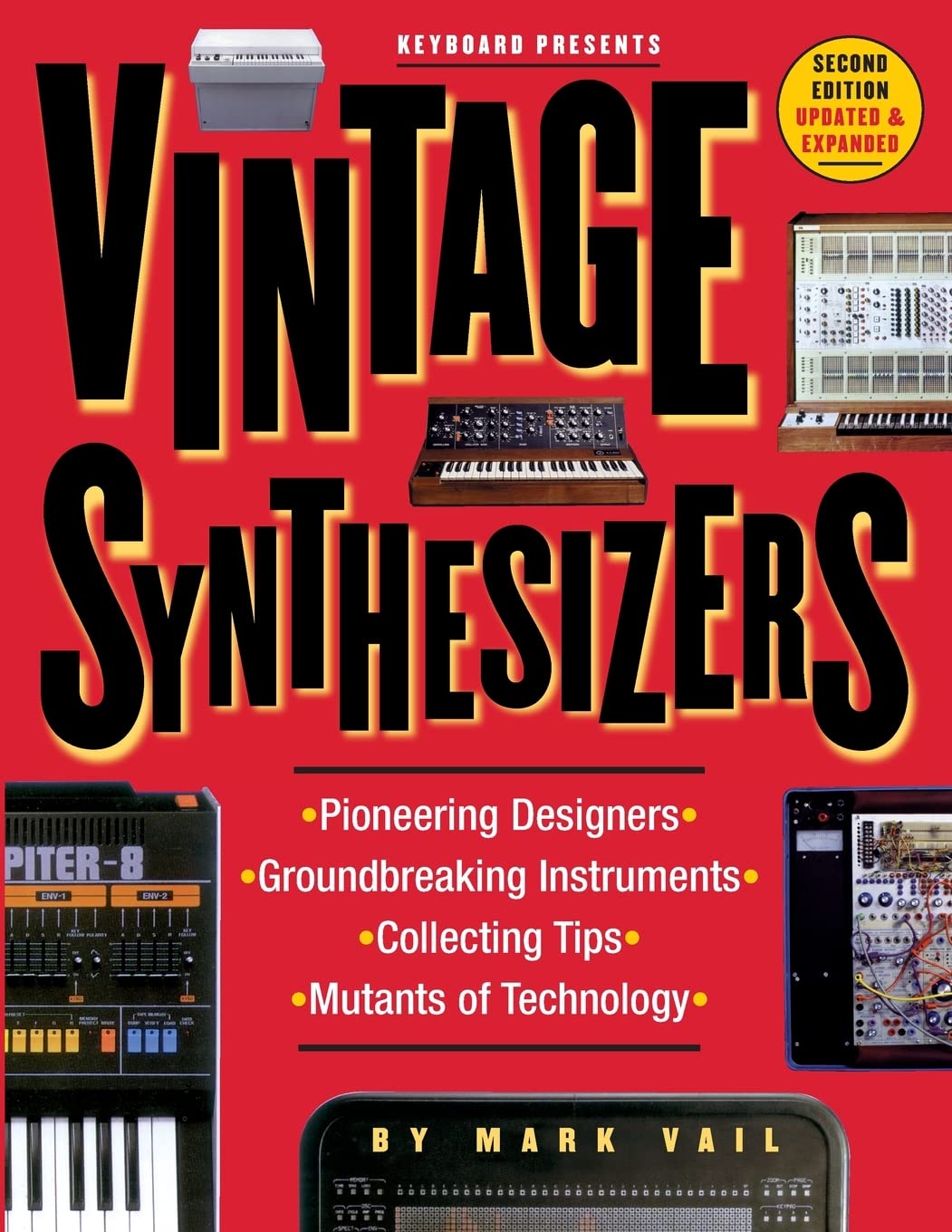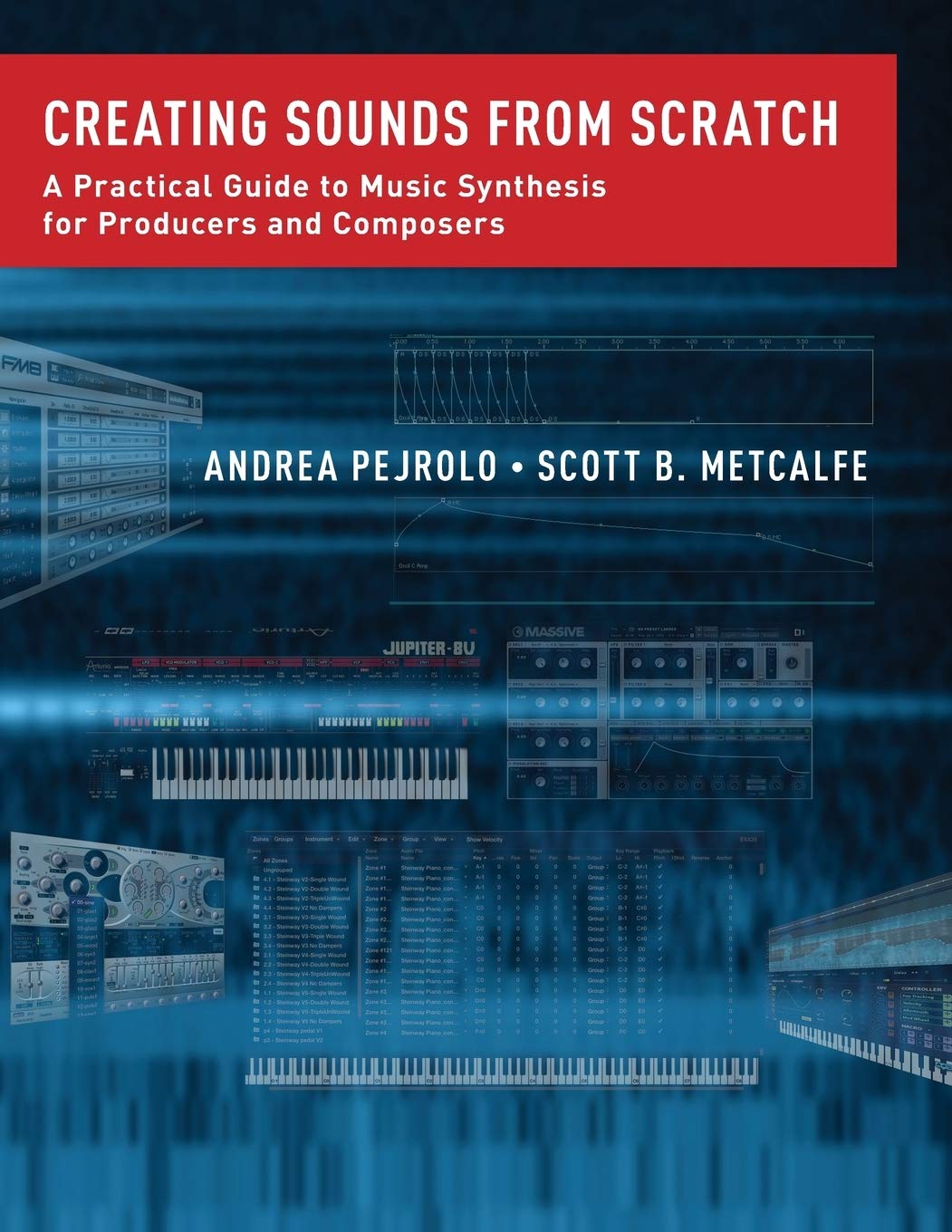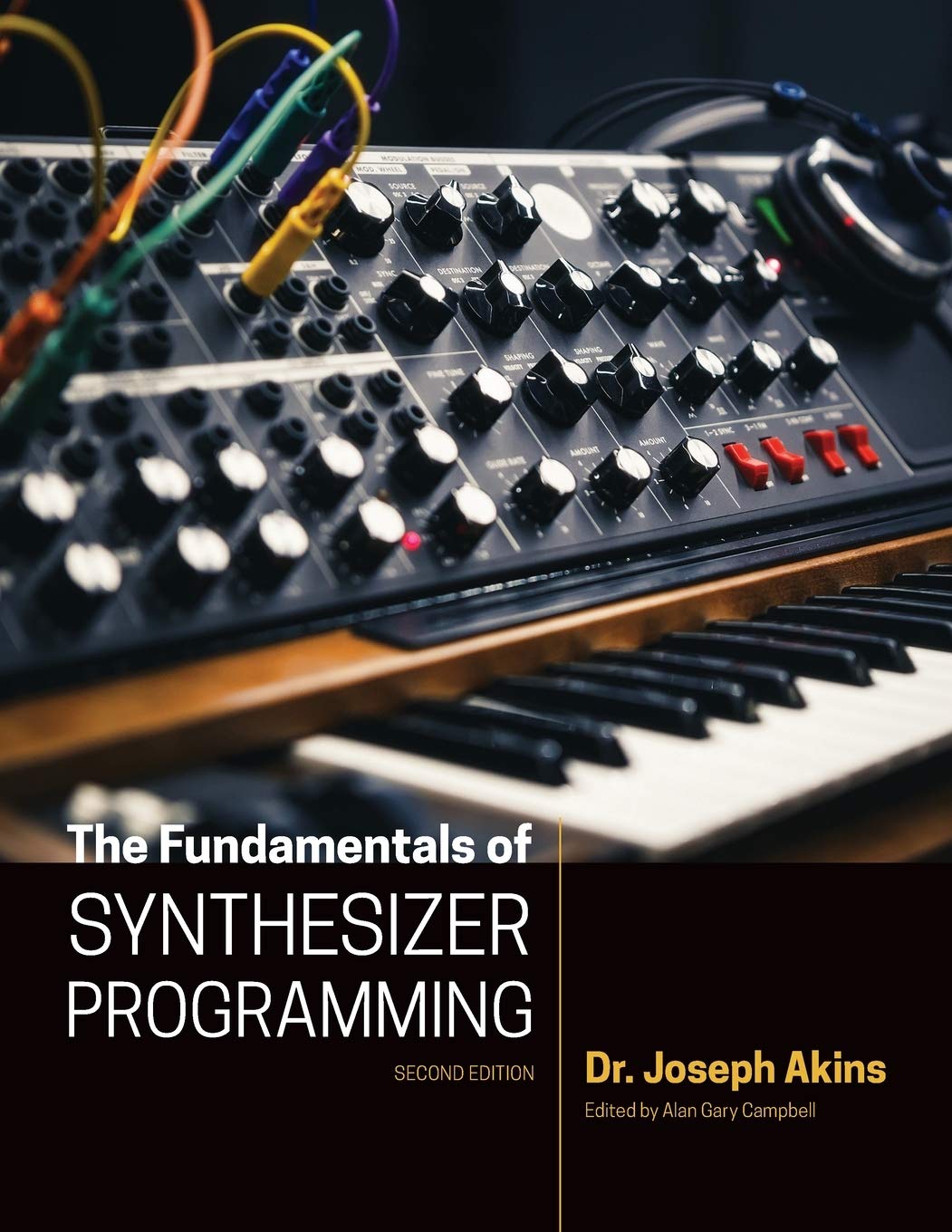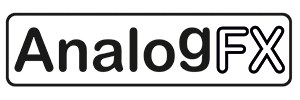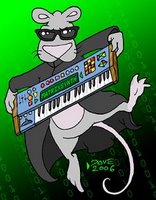via this auction
 "VCTimeGen Clock (TGC)
"VCTimeGen Clock (TGC)The VC TimeGen Clock has the left cell "blue" out being an asymmetrical tri wave & "red"out being a 50% duty cycle square wave output which stays constant through the manual "freq' POT range in combination with the "both" position selected w/ external CV -- BUT with the ability to modify the duty cycle (pulsewidth) of the output(s) using external CV source from either the front or the back ofthe pulse by selecting "rise" or "fall" on the CV source select switch. That way you can create syncopation in the rhythm patches & pulse width mod in the audio range use.
The right cell has DTG functionality, just like the CV TimeGen OSC.
÷N Comparator (NCOM)
The ÷ N COMPARATOR (NCOM) consists of two sections: a comparator and a voltage-controlled pulse divider. The divider section outputs a pulse once every "N" comparator pulse, where "N" is a number from 1 to 31, settable with a control voltageat the divider's VC input (or manually via the divider's control knob). Additionally, the Divider outputs a staircase wave with "N" steps.This will produce whole-tone steps when plugged into the 1 V/Oct input of aVCO.
This module has two distinct areas of use (in addition to the normal functions of the comparator):
For audio frequencies, the divider can be set to output sub-divided frequencies with digital precision. Output frequency depends on "N". If "N"= 2, 3, 4, etc., the output frequencies will be an octave, an octave and a fifth. or two octaves below the input, respectively. Because "N"is voltage controllable, arpeggios and various melodies can easily be programmed. The nature of this type of division (integer division), results in frequencies that fall along the sub-harmonic series, a series that has great tonal charm.
For sub-audio frequencies, the divider acts like a counter, outputting a pulse only after "N" number of input pulses. Input pulses can be fairly random, or regular. This capability is especially powerful for determining tempos and rhythmic patterns when using several sequencers (especially if the "N" vc input is taken from one of a sequencers rows of controls). In a more random situation, using a microphone preamp/detector as input. the divider might be set to count how many times a sound of a certain loudness will have occurred, and be set to trigger an event upon reaching the count. Since the count can be made variable (from 1 to 31), fairly complex and subtle inter-actions can be generated.
Wizardry: With feedback, this can be patch-programmed to oscillate.You can vary the frequency by turning the divider control knob. Using this module to divide clock pulses is an obvious application; it is also useful for dividing high-frequency audio.
DualAnalog Shift Register w/ input attenuator pot (2ASR)
The ANALOG SHIFT REGISTER (ASR) is a sequential sample and hold module for producing arabesque-like forms in musicalspace (see diagram). Whenever pulsed, the previously held voltage is sent down the line to three consecutive outputs to produce the electrical equivalent of a canonical musical structure. A pulse output permits linking two or more Analog Shift Registers together to form longer patterns.
Quantizer(QUAN)
The QUANTIZER (QUAN) provides a simple means to turn any control voltage into voltage steps corresponding to well tuned (equal - tempered) tones of the musical scale. It is scaled to 1volt per octave. Thus, a zero to +5 volt envelope at the Quantizer's input produces a staircase of voltages corresponding to a chromatic scale spanningfive octaves.
 If patched to the 1 volt per octave input of an oscillator tuned to "E", a gradual slope of 1 volt applied to the input of the Quantizer will produce the following steps of the musical scales:
If patched to the 1 volt per octave input of an oscillator tuned to "E", a gradual slope of 1 volt applied to the input of the Quantizer will produce the following steps of the musical scales:E - F - F# - G - G# - A - A# - B - C - C# - D - D# - E. (normal chromaticscale)
If the 1/6 Scale Select is HIGH, then the scale produced will be:
E - F# - G# - A# - C - D - E. (whole - tone scale)
If the 1/3 Scale select is HIGH, then the scale produced will be:
E - G# - C - E. (scale of major third steps)
If both the 1/6 and 1/3 inputs are high, the scale will be:
E - F - G# - A - C - C# - E. (alternating half - step/minor third step)
Since the Scale Select inputs can be activated very quickly, the Quantizer can produce a very wide variety of tonal effects, quickly moving between four different types of musical scales(chromatic, whole - tone, the augmented triad, and a six - step major - minor scale often heard in certain oriental musics).
The Quantizer features six channels, as a "stand - alone" module, and takes up two inches of panel space. Accuracy of the Quantizer is 3 cents maximum deviation from the ideal equal -tempered semi - tone over a five octave range (i.e. just about the limits ofpitch sensitivity of the human ear). Response time for all channels is about 8 milliseconds."


















